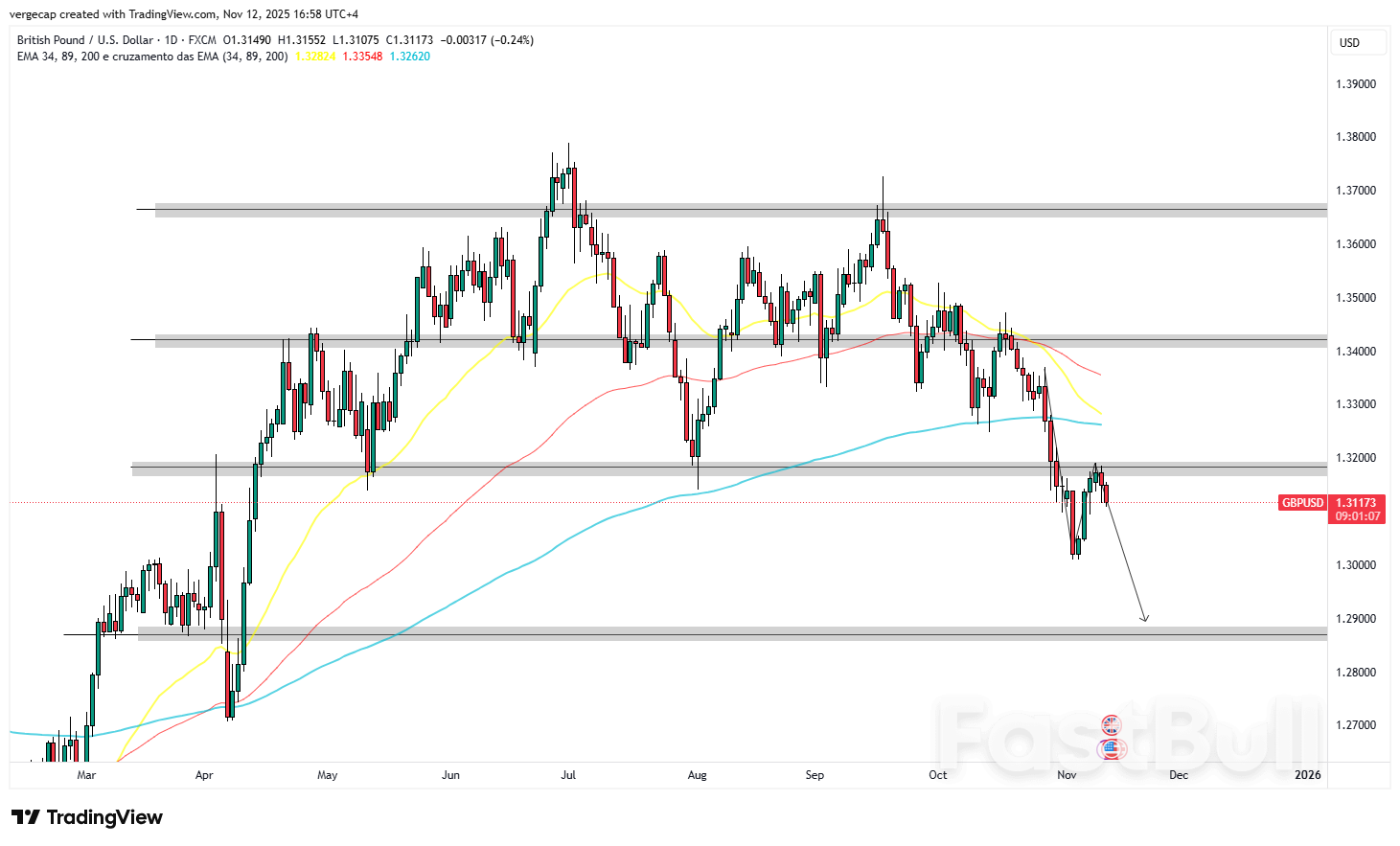The British Pound extended its losing streak on Wednesday, underperforming most of its major peers except the Japanese Yen, as renewed speculation over a December interest rate cut by the Bank of England (BoE) weighed heavily on sentiment.
Market participants are increasingly convinced that the BoE’s tightening cycle has come to an end and that policymakers could soon pivot toward monetary easing. According to Reuters, traders now expect around 20 basis points of rate cuts before the end of the year, a view strengthened by a dismal set of labour market figures released earlier this week.
The UK’s latest employment data for the three months ending September showed a net job loss of 22,000 workers — the first decline in employment since March 2024. The headline ILO Unemployment Rate rose to 5%, marking the highest level since early 2021 and underscoring the growing cracks in the nation’s labour market as higher borrowing costs continue to filter through the economy.
Adding to the dovish narrative, wage pressures — one of the BoE’s biggest concerns in its inflation fight — have started to cool noticeably. Average Earnings excluding bonuses slowed sharply to 4.6% year-on-year, the weakest growth rate in more than three years. The data suggests that the labour market, long considered resilient, is finally succumbing to the cumulative drag of elevated interest rates and weakening demand.
The slowdown in wage growth is also expected to feed into softer consumer inflation expectations, reinforcing the case for the BoE to loosen policy sooner rather than later. A cooling labour market, coupled with subdued consumption and stagnant business activity, gives policymakers a reason to start normalizing policy to support growth — a move that could weigh further on the Pound in the months ahead.
Despite the mounting pressure, not all policymakers share the market’s conviction that rate cuts are imminent. Megan Greene, a member of the BoE’s Monetary Policy Committee (MPC), signaled during a UBS conference in London on Tuesday that she favors maintaining the current rate stance. Greene argued that economic conditions could stabilize in the near term and that wage growth might rebound once confidence and hiring activity recover. Her comments, however, did little to shift sentiment as traders focused more on the hard data pointing toward a rapidly cooling economy.
The Pound’s underperformance reflects investors’ growing belief that the BoE will soon be forced to join the global wave of monetary easing seen in other major economies. As the U.S. Federal Reserve signals a potential soft landing and the European Central Bank faces similar calls for stimulus, the UK’s slowing growth trajectory could make the BoE one of the first major central banks to resume rate cuts.
From a broader perspective, the combination of elevated living costs, sluggish productivity, and waning business investment continues to erode the UK’s economic resilience. If unemployment continues to rise and wage growth remains weak, sterling could face additional downside pressure heading into year-end, particularly against the U.S. dollar and the euro.
Technical Analysis 
On the technical front, the GBP/USD pair remains under significant bearish pressure following a failed attempt to break above a critical daily resistance zone. The recent rejection at that level has triggered renewed selling momentum, suggesting that the pair’s short-term bias has turned decisively negative.
Intraday price action reveals a clear bearish imbalance, often a precursor to further downside movement. The pair’s inability to sustain gains above the 1.3150 region highlights weakening buying interest and validates the view that bears remain firmly in control.
Momentum indicators, including the Relative Strength Index (RSI), are trending lower and have yet to show signs of exhaustion, while the pair continues to trade below both its 50-day and 200-day moving averages — classic signals of sustained bearish sentiment.
In the near term, i anticipate a potential decline toward the 1.3064 support level, which coincides with a key Fibonacci retracement area. A decisive break below that region could open the door to a deeper correction toward 1.3000 and potentially even 1.2900 in the coming sessions. On the upside, immediate resistance lies near 1.3175, followed by 1.3220, where renewed selling could emerge if risk sentiment deteriorates further.
TRADE RECOMMENDATION
SELL GBPUSD
ENTRY PRICE: 1.3120
STOP LOSS: 1.3220
TAKE PROFIT: 1.2900













